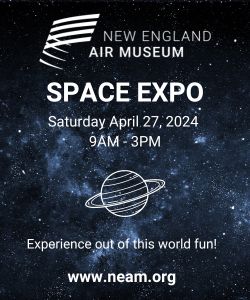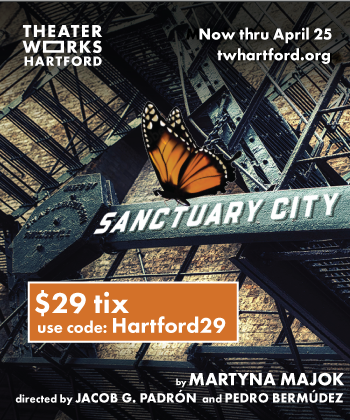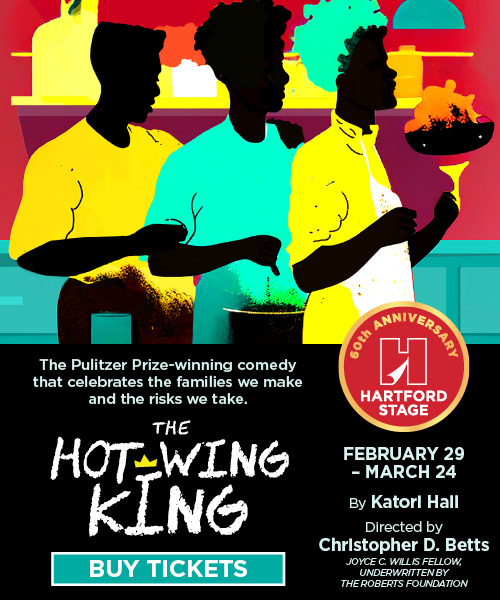By Bruce Poinsette and Intisar Abioto
Growing up in Lake Oswego, a town nicknamed “Lake No Negro,” I got used to people asking me why I, as a Black person, would live there. I often struggled to come up with a sincere answer. More often than not, I would retreat to some version of “At least it’s not rural Oregon.”
In the fall of 2014, I traveled to Eastern Oregon with Intisar Abioto, an acclaimed photographer and frequent collaborator of mine, to do case studies for the Urban League of Portland’s State of Black Oregon 2015, a comprehensive report on various aspects of Black life in the state. Perhaps as much as any region we traveled to for the project, Eastern Oregon exemplified the glaring juxtaposition between vast natural beauty and anti-Black ghost stories—and the rich Black history hidden behind it all. For example, despite La Grande’s reputation as the unofficial Ku Klux Klan capital of the state (former Oregon Gov. Walter Pierce, once endorsed by the Klan, lived on a ranch here in the 1920s), the town is home to one of the oldest Black churches in Oregon, Boyd Memorial Baptist Church. Now named Amazing Grace Fellowship, the church was created, in large part, to serve the Black community that came to the region during the Great Migration, seeking work in the logging industry.
As in other parts of Eastern Oregon, this rich Black history is tucked away amid the more eye-catching attractions, like the Columbia River Gorge and the Wallowa Mountains, or else it is obscured by the noticeable increase in Thin Blue Line flags and aggressive displays of so-called patriotism.
Fast-forward to the spring of 2022. My YouTube series, The Blacktastic Adventure, which highlights the variety of stories about Black life in Oregon, was headed to the eastern part of the state for a road trip episode. The crew (myself, Abioto, Ifanyi Bell, and Tiara Darnell) set out for Pendleton and Joseph with plenty of questions. Mainly, we wondered: Why would a Black person live in this part of the state? And conversely, by asking that question, were we stereotyping in reverse?
Our trip began in Portland, at the Open Signal media arts center, where the crew met to gather equipment and pack the van before hitting the road. I was initially struck by just how much gear Bell had checked out for the trip: cameras, microphones, all types of lights and heavy steel stands, and tripods in every size. I’d never driven a van before, so I was entering the impending four-hour drive with both excitement and anxiety. The latter emotion threatened to be overwhelming.
Thankfully, the trip through the Columbia River Gorge was as calming as I remembered it being back in 2014. As the largest designated National Scenic Area in the U.S., the Gorge is certainly well known. But since Eastern Oregon is one of the unwritten places Black people don’t visit unless it’s for business, we don’t often get to appreciate the area—with its tree-lined canyon terrain, its waterfalls, and the winding Columbia River—especially not loudly and in the company of other Black Oregonians. Taking in the landscape with the crew and reminiscing about our past experiences in the region made the drive go by quickly. Some of our stories touched on nature; many highlighted unsettling moments, such as seeing blackface dolls casually sitting in a restaurant’s display case.
Soon, we found ourselves in downtown Pendleton. No longer rolling through the Gorge, we were now on Main Street, in a town that looked to me like it belonged in a Western movie.
I first met Pendleton resident Leon Ransom on that initial trip I’d taken with Abioto in 2014, for the State of Black Oregon project. One of the most indelible pieces to come out of that trip was Abioto’s photo of Ransom: a portrait of a Black cowboy. During our first interview, Ransom had repeatedly referenced George Fletcher, a legendary Black cowboy who’d been inducted into the Rodeo Hall of Fame at the National Cowboy & Western Heritage Museum in 2001, nearly 30 years after his death. So it was fitting that this time we caught up with Ransom in front of the bronze statue of Fletcher on Main Street. Erected in 2014, a few months before our last visit, it was the first statue of a Black person in Pendleton.
Fletcher is most well known as the People’s Champion of the Pendleton Round-Up, a title he earned during the 1911 Northwest Saddle Bronc Championship, when the judges denied Fletcher first place, but the crowd declared him the real winner. He was a larger-than-life figure in Pendleton and was also a close friend of Ransom’s father. “He was just ‘George’ to me,” says Ransom.
Sitting in front of the statue with his wife, Kathleen, and sporting a black cowboy hat and boots, Ransom simultaneously stands out and appears completely at home. His family migrated to Pendleton from Springfield, Illinois, in 1952. His parents had worked as sharecroppers in Mississippi. When we spoke in 2014, Ransom says his father had made the choice to relocate to Pendleton because “he wanted to get as far away from the cotton fields as he could.”
When Ransom’s family went back to visit Mississippi, they wouldn’t let him go into town with his siblings, because he was never afraid to speak his mind, and they feared for his safety. His early confidence helped him become a standout athlete in high school. He was recognized as one of the top football prospects in the state and ended up playing at the University of Nevada, Las Vegas. However, his path was paved, in many ways, with the manifestation of his mother’s fears.
Prior to his senior year of high school, Ransom was caught with marijuana, and a local prosecutor named Rex Bell Jr. decided to make an example out of the confident teen by sentencing him to jail time. Ransom spent his senior year sleeping in jail at night and going to school and playing sports during the day. This same prosecutor, who had gone out of his way to make an example of Ransom, also happened to be a recruiter for the University of Nevada, and he convinced Ransom to take a scholarship at the school. “[Bell] was a very good man who just wanted to help,” says Ransom. “I know I gave him fits.” Eventually, the two men became friends.
Their friendship is reflective of the complicated space Ransom occupies. He has personally experienced and witnessed many racial injustices in Pendleton over the years; however, he also maintains a friendly relationship with the town’s residents, having grown up with many of them.
“If you’re mad, my mom used to tell me, you’re going to be fighting all the time. So you have to pick your battles.” Of the town’s white residents, Ransom says, “They mean well—most of them.” He laughed. While he may pick his battles when it comes to racism, he also carries himself with a confidence reminiscent of Muhammad Ali, his childhood hero, whose image sits next to portraits of Barack Obama and Ransom’s family on his living room wall.
At heart, Ransom says, he just considers himself a country guy—someone who enjoys tending to horses, hunting, and fishing, and who refuses to let others push him around, a quality he shares with his childhood family friend Fletcher. One of Fletcher’s friends, Ransom told me, was fellow Round-Up legend Jackson Sundown, a Nez Perce rodeo rider. Outside of competitions, Fletcher and Sundown hunted and fished together, gaining respect throughout the region for their willingness to fight—physically—when faced with racism.
While he and his family have dealt with a lot, Ransom says he tries not to let it bother him.
A lot of it comes down to curiosity, he notes, and white people having little experience with Black people: “You get used to people looking at you and talking to you.”
That part of the conversation stuck with me for hours after the interview ended. After filming b-roll of the plains surrounding our motel, the crew and I went to a nearby Shari’s restaurant for dinner. As we walked through the parking lot, people in the booths lining the window stared at us. Many didn’t break eye contact, even as we stared back.
There was that juxtaposition again. On one hand, we were surrounded by the tranquil beauty of rolling hills and blue skies. And on the other, we were being stared at by numerous white people in a Shari’s, as if we had walked into the restaurant with bleeding heads on pikes.
Curious, indeed.
While the Gorge and the plains in Pendleton were as breathtaking as ever, ultimately, I was still treading familiar ground. Traveling to Joseph would be a first for me.
The drive to Joseph, two hours to the east, featured winding mountain roads, even more lush plains, and one stretch in particular, Hells Canyon, which holds the distinction of being the deepest river gorge in North America. Despite being slightly out of our way, the scenery was worth the extra miles. Still, when I reflect on the drive, the thing that stands out the most isn’t any of the views, but one stretch of road: the entire main street of a small town that was lined with American flags, one every few feet.
The sight evoked images from recent years of neo-Nazis marching through streets across the country, chanting “USA” without an awareness or care about the inherent irony. That same loud, blind patriotism is what has millions of Americans frothing at the mouth to this day when they hear the name Colin Kaepernick. And yet, it’s an atmosphere of potential danger that, as Black Americans, the members of our crew have learned to navigate. I made a mental note of the jarring sight, and we continued on.
This article was originally published in YES Magazine.





